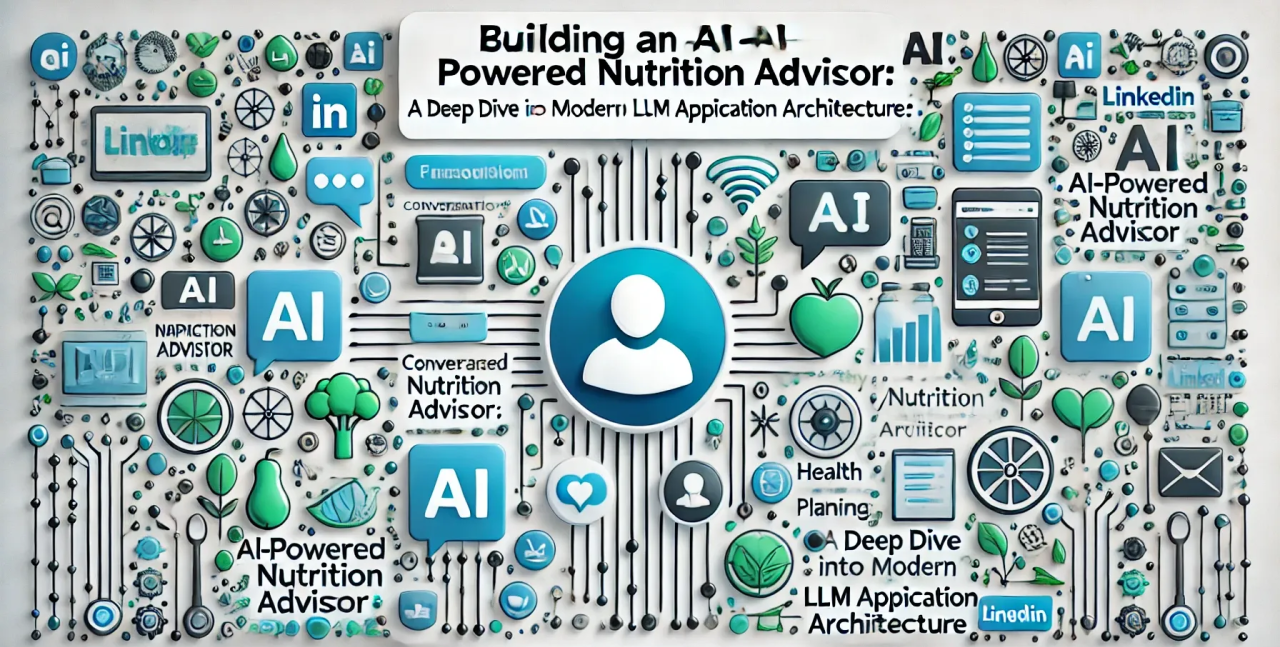Building an AI-Powered Health Tracker and Diet Planning Application: A Developer’s Perspective
The rise of AI has created immense opportunities for developers to build impactful applications. One of the most exciting domains is health and fitness, where AI-powered tools can track body metrics and create personalized diet plans. Here’s a comprehensive guide for developers on creating such a platform.
Core Components of the System
Building an AI health tracker involves multiple components that work seamlessly to provide accurate insights and personalized diet plans:
1. Data Collection Modules
- Wearables Integration: Connect to smartwatches, fitness bands, and smart scales via APIs (e.g., Fitbit API, Garmin API, Apple HealthKit).
- Manual Data Input: Allow users to log metrics like weight, meal details, and symptoms manually through a user-friendly interface.
- Camera Integration: Use computer vision for food recognition and portion estimation through tools like TensorFlow or OpenCV.
2. Data Processing and Storage
- Backend Database: Store user data securely in a database (e.g., MongoDB, PostgreSQL).
- ETL Pipelines: Process and normalize data for AI models using tools like Apache Airflow or Pandas.
3. AI/ML Models
- Health Analysis: Build models to calculate BMI, BMR, calorie needs, and nutrient deficiencies.
- Diet Plan Generator:
- Use supervised learning models trained on datasets of dietary requirements, nutrition, and meal plans.
- Tools: TensorFlow, PyTorch, or Scikit-learn.
- Progress Tracking: Implement time-series analysis to predict trends in weight, muscle gain, or fat loss.
4. User Interface
- Mobile App: Build native apps using Flutter, React Native, or Swift/Kotlin for platform-specific solutions.
- Web Dashboard: Use frameworks like React.js, Angular, or Vue.js to create a responsive and interactive dashboard.
5. Security and Privacy
- Ensure compliance with health data regulations like HIPAA (in the U.S.) or GDPR (in the EU).
- Encrypt sensitive user data at rest and in transit using protocols like AES-256 and HTTPS.
Technologies to Use
Programming Languages
- Python: For AI/ML development and data processing.
- JavaScript/TypeScript: For frontend and backend development.
- Swift/Kotlin: For iOS and Android native apps.
AI Frameworks and Libraries
- TensorFlow or PyTorch: For training and deploying AI models.
- Hugging Face Transformers: For any natural language processing tasks (e.g., interpreting user dietary preferences).
APIs and Tools
- Nutrition APIs: Like Spoonacular or Edamam for retrieving meal plans and nutritional data.
- Fitness APIs: For integrating step counters, heart rate monitors, and activity trackers.
Cloud Platforms
- AWS: For scalable computing (e.g., EC2), storage (e.g., S3), and AI services (e.g., SageMaker).
- Google Cloud: For AI tools like AutoML and data storage.
- Azure: Offers Health Bot and other prebuilt health services.
Database Options
- MongoDB: Ideal for handling semi-structured user health data.
- PostgreSQL: Great for relational data with advanced querying capabilities.
Development Workflow
Step 1: Define Use Cases
- What user metrics will the app track? (e.g., weight, BMI, sleep patterns)
- What fitness goals will it support? (e.g., weight loss, muscle gain)
- Will it offer real-time recommendations?
Step 2: Design the Architecture
- Frontend: Mobile-first UI/UX for logging and viewing data.
- Backend: RESTful or GraphQL APIs for communication.
- AI Engine: Modular design for scalability, allowing the addition of new models.
Step 3: Gather and Preprocess Data
- Use publicly available datasets like:
- USDA Food Database: Nutritional information.
- Health Data.gov: Public health datasets.
- Preprocess raw data by cleaning, normalizing, and augmenting it for model training.
Step 4: Build AI Models
- Diet Recommendations:
- Input: User metrics (e.g., weight, activity level, preferences).
- Output: Meal plans with caloric and macronutrient breakdowns.
- Progress Analysis:
- Time-series forecasting for weight/muscle trends.
- Anomaly detection for irregularities in health data.
Step 5: Develop and Test Features
- Food Logging: Build a photo-based logging feature with image recognition models.
- Diet Adjustment: Implement adaptive AI that modifies diet plans based on progress.
- Integration Testing: Ensure seamless communication between frontend, backend, and AI models.
Step 6: Deploy and Maintain
- Use CI/CD pipelines for regular updates.
- Monitor user feedback and iterate on features.
Challenges and Solutions
1. Data Privacy
- Challenge: Handling sensitive health and dietary information.
- Solution: Implement strict access controls, anonymize data, and ensure end-to-end encryption.
2. Model Accuracy
- Challenge: AI models need accurate predictions to gain user trust.
- Solution: Continuously train models on diverse datasets to improve accuracy and generalizability.
3. User Engagement
- Challenge: Keeping users engaged with the app.
- Solution: Add gamification features like rewards for hitting fitness milestones.
Monetization Strategies
- Freemium Model: Offer basic features for free and charge for advanced features like custom meal plans.
- Subscription Plans: Monthly or yearly subscriptions for full access.
- Partnerships: Collaborate with gyms, nutritionists, or food delivery services for commissions.
Future Enhancements
- Integration with Genomics: Use genetic data to create hyper-personalized diet plans.
- AI Chatbots: Add conversational AI for real-time health tips.
- Wearable Tech Innovations: Expand compatibility with new wearables for deeper health insights.
Conclusion
Developing an AI-powered health tracker and diet planning application is an ambitious but rewarding project. By combining AI, data analytics, and intuitive design, developers can create a tool that not only meets but exceeds user expectations. As health-conscious lifestyles continue to grow, this is the perfect time to leverage AI and contribute to a healthier, tech-enabled world.

